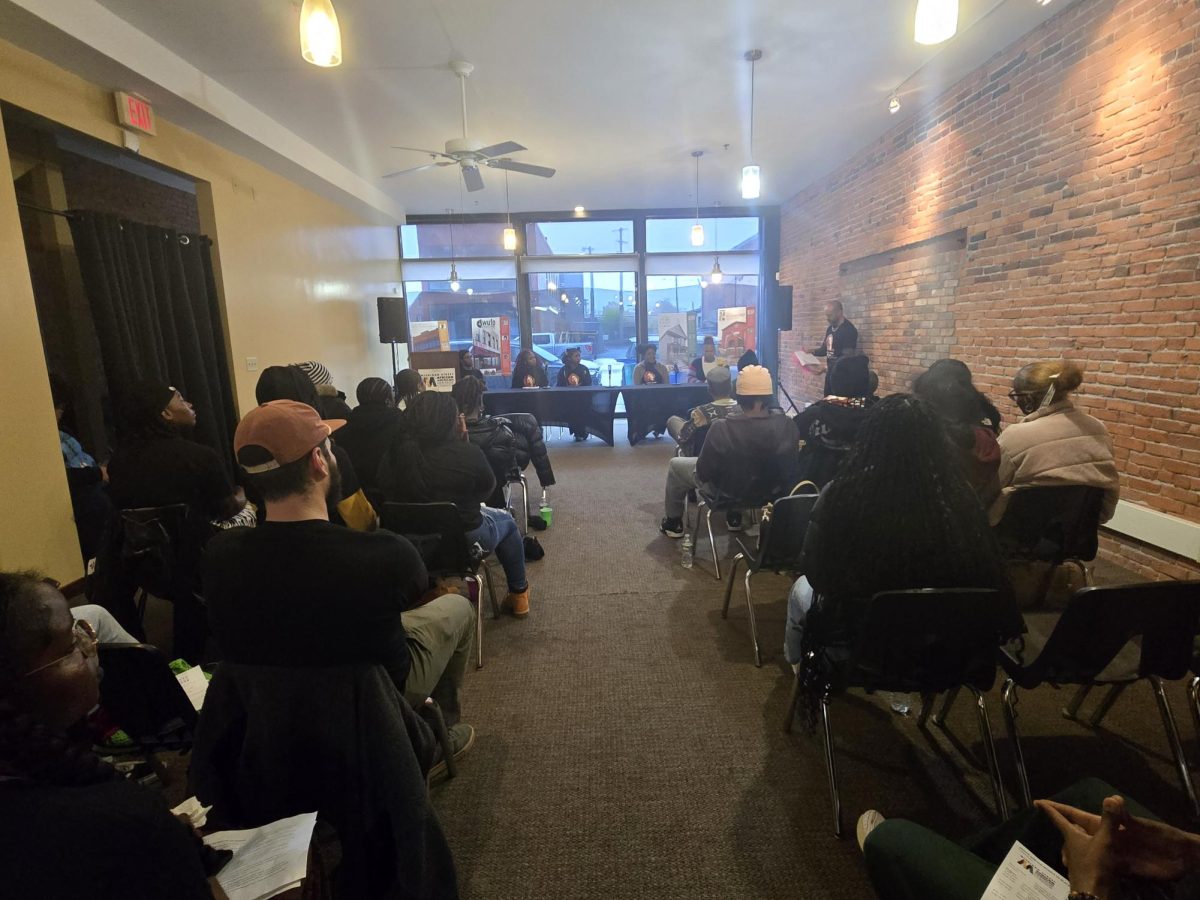Domestic Violence: speak up and help others get out
October 8, 2014
Imagine: you’re sitting in your college dorm and all of a sudden you hear what sounds like a couple arguing next door. Minutes go by and the arguing settles down, but then you hear some banging, furniture moving and finally, crying.
When this happened to me, my first thoughts were that something big had happened, and that it just got way out of hand. About a week had passed and the same thing happened again. As time went by it kept happening more frequently, although not as loud, but since my bed was adjacent to the wall, all I would hear is crying.
For the most part, I minded my business. I thought that if anything, she was crying because they were constantly arguing and maybe her feelings were hurt. I had hoped that she would leave him instead of crying over him multiple times during the week, but half way through the semester I had lost hope for my neighbor and was selfishly annoyed by all the crying.
It didn’t occur to me that there was a real issue until the boyfriend threw all caution to the wind one night and got a little louder than normal. I could hear him threatening her, and her pleading for him to stop and calm down. The crying wasn’t only from repeated emotional pain, but physical pain as well once the banging came back.
I wondered if her other neighbors heard it, where her roommate was, why no one else was there to help her. I didn’t want to overstep my boundaries—I’d never even spoken to this girl, but I didn’t want this to be happening to someone in such a close proximity and just ignore it.
The next day, I went to my RA and told her what I was hearing. She couldn’t really do anything unless it was actively happening, so I had to call the RA on duty the next time I heard the commotion, who then called University Police Department.
UPD came and “investigated,” stating they had a noise complaint. My neighbor’s boyfriend apologized and told them they’d keep it down—and they did. I never heard the commotion again, but would periodically hear the crying, until that, too, faded out.
Domestic violence can happen to anyone—both men and women can be victims of domestic violence, but the victims are disproportionately women. According to the National Coalition Against Domestic Violence, almost 20 people per minute are victims of domestic violence at the hands of an intimate partner, and that’s just counting people in the United States. One in four women will experience domestic violence in her lifetime, and women are more likely to be killed by their partners as a result of domestic violence.
The coalition defines domestic violence as the willful intimidation, physical assault, battery, sexual assault and/or other abusive behavior as part of a systematic pattern of power and control perpetrated by one intimate partner against another. Domestic violence can happen every day or once in awhile, but either way it is important to be able to identify it and then try to get out of the situation. In this case, it was obvious that this relationship was affected by domestic violence, but sometimes the signs aren’t that obvious.
Safehorizon.org, a website dedicated to helping victims of domestic violence, provides a list of 10 signs of domestic abuse that are not just physical. Signs include unwarranted accusations of cheating, making victims feel worthless, isolating victims from their friends and family and trying to control the victim and/or their access to money.
In addition to breast cancer awareness, October is also domestic violence awareness month. If you or someone you know is a victim of domestic violence, there are many organizations that are dedicated to helping victims of domestic violence, including Safe Horizon, NCADV, and the domestic violence hotline.
Call 1-800-799-SAFE (7233) for more information or to get help with a domestic violence situation.
Email: Middleton.record@outlook.com



